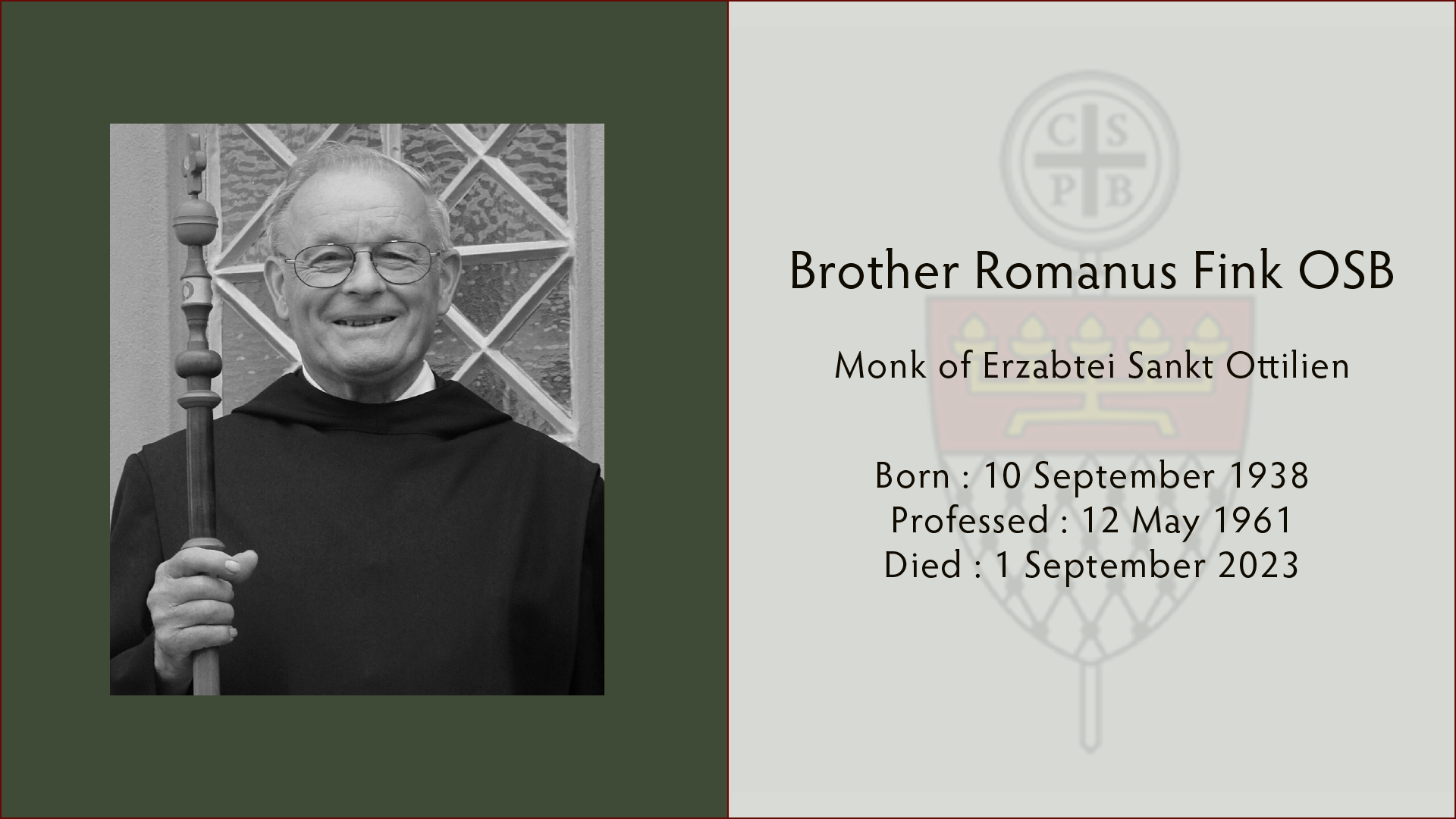Photo courtesy of Erzabtei Sankt Ottilien
Over the last few weeks, the life of Brother Romanus, who was being cared for in the infirmary after suffering a severe stroke, was increasingly fading away. At midday on 1 September, a few days before his 85th birthday, he gave his life back into the hands of his creator. He was in the 62nd year of his monastic profession.
He was born in Landshausen, District of Dillingen, on 10 September 1938. His parents, the worker Peter Fink and his mother Magdelena, née Limmer, were gifted with a total of eight children of which Karl Fink was the youngest. He attended primary school in the small village of Landshausen from 1944 to 1952. He then began an apprenticeship as a mechanic at the Bosch company in nearby Giengen, which he completed in 1956 with the journeyman’s examination and was taken on by the company as a mechanic.
In his application for admission to the Archabbey of St. Ottilien in January 1959, he describes how he had wrestled with the idea of entering a monastery since the beginning of his career. After a retreat at St. Ottilien, he came to the conclusion “to follow the call of God.” Entrance followed on 15 May 1959. Upon being admitted to the novitiate he received the name of the Roman soldier and martyr Romanus. His temporary profession was on 12 May 1961 and perpetual vows on 18 May 1964. He was one of the last monks who still made simple profession instead of the solemn profession that is customary today. He occasionally referred to this as a reminder of the former strict separation between brothers and priests. In St. Ottilien he became part of the metalworkers’ team, for which he passed another journeyman’s exam in 1964. The following year he also passed the master’s exam in this profession; this enabled him to play a part in the training of apprentices. In total, he was able to train around 30 apprentices until the apprentices’ home was closed in 1997. In 1966 he took over the management of the workshop from his predecessor Br. Felix Nowak (1926–1969), who died at an early age. Professionally, he proved to be extraordinarily stable. From the time of his entrance in 1961 until the last years of his life, he worked continuously in the metalwork shop.
The hardworking confrere was also involved in a number of other activities: He was active in the fire department from 1959 to 1996, dug the graves in the cemetery for 25 years until the introduction of a small excavator, and maintained the tower clock. Thanks to a remarkable musical talent and a beautiful voice, he served as a cantor for almost 30 years, as evidenced by early recordings of the monastic schola. In addition, he sang in the brothers’ choir and played the trumpet in the brass band for a good 40 years. Among his private pursuits were repairing historical clocks and woodworking and milling, for which he had set up a second workshop on the upper floor of the metalwork shop. To this day, many visitors to the archabbey are grateful to him for the numerous bicycles (on loan) that he repaired and maintained.
Brother Romanus proved to be unpretentious and frugal in his way of life. He owned and left behind hardly any possessions worth mentioning. He largely avoided outside contacts in order to be completely available for the monastery. On the other hand, he liked to talk and at length, so that conversations with him often lasted quite long. In his dealings he was sometimes a bit sensitive and could be subject to mood swings.
The metalworking talents of Brother Romanus had an artistic touch. Thus he contributed to the renovation of the church and the library with high quality metalwork, the same in the former monastery dependencies of Jakobsberg and Wessobrunn. He will be remembered for a long time especially for the lamps and grilles designed in historical styles. His great legacy, however, is the redesigning of the monastery cemetery. There, the former Korean missionary and blacksmith Brother Theodulph Haseidl (1907– 1997) had already artistically designed wrought-iron crosses. In 1987, Brother Romanus took over his task and creatively developed it further: the designs of individual crosses were applied to a similar basic shape—a small organ for the organists, a Torah scroll for the Hebrew teacher, a bouquet of flowers for the gardener, keys for the monastery porter, spears and palms for missionaries, and many other endearing ideas and allusions. Thanks to this gradual redesign, the cemetery has now been visually transformed into a cohesive cross and memorial landscape.
The physically hard work of metalworking and professional accidents took their toll so that in his last years Brother Romanus had to struggle with back and hip problems. Gradually he retired and in 2018 handed over the metalwork shop to a successor that he had trained. A severe stroke in 2020 left him half paralyzed so that he moved to the monastery infirmary for nursing care. There he showed himself to be an uncomplaining patient and endured the speech impediment that led the otherwise talkative confrere into silence. May he now rest in peace!
Archabbot Wolfgang Öxler and community of Sankt Ottilien


